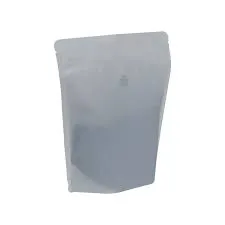- Afrikaans
- Albanian
- Amharic
- Arabic
- Armenian
- Azerbaijani
- Basque
- Belarusian
- Bengali
- Bosnian
- Bulgarian
- Catalan
- Cebuano
- chinese_simplified
- chinese_traditional
- Corsican
- Croatian
- Czech
- Danish
- Dutch
- English
- Esperanto
- Estonian
- Finnish
- French
- Frisian
- Galician
- Georgian
- German
- Greek
- Gujarati
- haitian_creole
- hausa
- hawaiian
- Hebrew
- Hindi
- Miao
- Hungarian
- Icelandic
- igbo
- Indonesian
- irish
- Italian
- Japanese
- Javanese
- Kannada
- kazakh
- Khmer
- Rwandese
- Korean
- Kurdish
- Kyrgyz
- Lao
- Latin
- Latvian
- Lithuanian
- Luxembourgish
- Macedonian
- Malgashi
- Malay
- Malayalam
- Maltese
- Maori
- Marathi
- Mongolian
- Myanmar
- Nepali
- Norwegian
- Norwegian
- Occitan
- Pashto
- Persian
- Polish
- Portuguese
- Punjabi
- Romanian
- Russian
- Samoan
- scottish-gaelic
- Serbian
- Sesotho
- Shona
- Sindhi
- Sinhala
- Slovak
- Slovenian
- Somali
- Spanish
- Sundanese
- Swahili
- Swedish
- Tagalog
- Tajik
- Tamil
- Tatar
- Telugu
- Thai
- Turkish
- Turkmen
- Ukrainian
- Urdu
- Uighur
- Uzbek
- Vietnamese
- Welsh
- Bantu
- Yiddish
- Yoruba
- Zulu
Different Varieties of Bags Used for Packaging Purposes
Types of Bags for Packaging
In today's fast-paced world of commerce and trade, packaging plays a crucial role in ensuring that products not only reach their destination safely but also make a positive impression on consumers. Among the various packaging options available, bags are one of the most versatile and widely used solutions. They come in numerous shapes, sizes, and materials, each tailored to suit specific needs and applications. This article delves into the different types of bags used for packaging, highlighting their features and benefits.
1. Plastic Bags
Plastic bags are perhaps the most common type of packaging bag. Made from polyethylene and other materials, they are lightweight, durable, and waterproof. Plastic bags can be found in a variety of forms, including shopping bags, garbage bags, and food storage bags. They are often used in retail settings for carrying goods, while heavier-duty plastic bags are employed in waste management. However, due to environmental concerns regarding plastic waste, there is a growing trend towards recyclable or biodegradable alternatives.
2. Paper Bags
Paper bags offer a classic alternative to plastic. They are made from renewable resources and are biodegradable, making them a more eco-friendly option. Paper bags are commonly used for retail shopping, food takeout, and gift-giving. Their ability to be printed on makes them an excellent choice for branding, allowing businesses to convey their identity while appealing to environmentally conscious consumers. Available in various strengths and finishes, paper bags can accommodate a range of products, from lightweight items to heavier goods.
3. Cloth Bags
Cloth bags, often made from cotton, jute, or other natural fibers, have gained popularity as a sustainable packaging option. Reusable and durable, they serve as an excellent alternative to single-use plastic bags. Many consumers are opting for cloth bags for grocery shopping, promoting a greener approach to packaging. With the ability to customize designs and patterns, cloth bags have also become a popular marketing tool for brands aiming to project an eco-friendly image.
types of bags for packaging

4. Vacuum Sealed Bags
Vacuum sealed bags are highly efficient for preserving perishable items, such as food. By removing air from the packaging, these bags minimize the growth of bacteria and spoilage, extending the shelf life of the contents. They are widely used in both commercial food packaging and home storage for items like meats, vegetables, and dry goods. Vacuum sealing not only helps maintain freshness but also saves space in storage, making them a practical choice for households and businesses alike.
5. Foil Bags
Foil bags, often lined with aluminum foil, are designed for products that require protection from light, moisture, and air. This makes them ideal for packaging food items, pharmaceuticals, and other sensitive materials. The reflective surface of foil bags not only preserves the quality of the contents but also provides an opportunity for eye-catching packaging designs. They are commonly used in the coffee and snack food industries, where maintaining freshness is a top priority.
6. Zipper Bags
Zipper bags, also known as resealable bags, provide added convenience for consumers. They come with a ziplock feature that allows easy opening and closing, making them ideal for storing snacks, leftovers, and small items. Their versatility spans various applications, including food storage, organizing household items, and travel. Zipper bags are available in plastic and non-plastic options, catering to different consumer preferences.
Conclusion
When it comes to packaging, the choice of bags is vast and diverse. Each type of bag serves a unique purpose, with varying benefits that cater to different industries and consumer demands. As sustainability continues to shape consumer preferences, the packaging industry is evolving towards more eco-friendly options. Understanding the types of bags available for packaging can help businesses make informed decisions that align with their operational needs and ethical considerations. As we look ahead, balancing convenience, functionality, and environmental responsibility will be key in shaping the future of packaging solutions.













